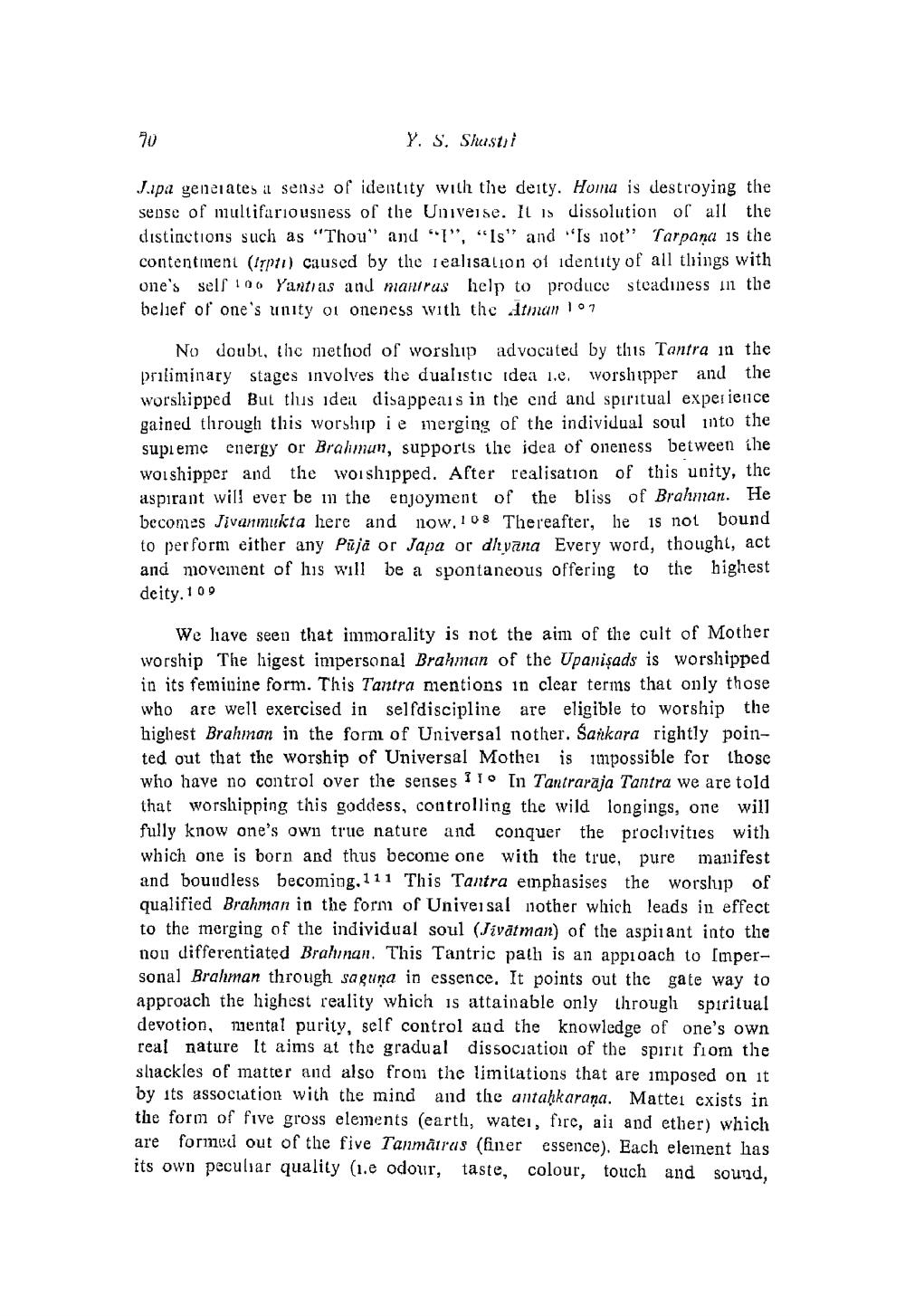________________
70
Y. S. Shastri
J.ipa generates il sense of identity with the deity. Homa is destroying the sense of multifariousness of the Universe. It is dissolution of all the distinctions such as "Thou" and "I", "Is" and "Is 1101" Tarpana is the contentment (
111) caused by the realisation of identity of all things with one's self 100 Yantras and manirus help to produce steadiness in the belief of one's unity on oneness witli the Atman 107
No doubt, thic method of worship advocated by thus Tantra in the priliminary stages involves the dualistic idea 1.e. worshipper and the worshipped But thus idea disappears in the end and spiritual experience gained through this worship ie merging of the individual soul into the supieme energy or Brahmun, supports the idea of oneness between ihe worshipper and the worshipped. After realisation of this unity, the aspirant will ever be in the enjoyment of the bliss of Brahman. He becomes Jivanmukta here and now, 108 Thereafter, he is not bound to perform either any Pūjā or Japa or dhyana Every word, thought, act and movement of his will be a spontaneous offering to the bigliest deity. 109
We liave seen that immorality is not the aim of the cult of Mother worship The ligest impersonal Brahman of the Upanişads is worshipped in its feminine form. This Tantra mentions in clear terms that only those who are well exercised in selfdiscipline are eligible to worship the highest Brahman in the form of Universal nother. Sankara rightly pointed out that the worship of Universal Mothei is impossible for those who have no control over the senses I To In Tantrarāja Tantra we are told that worshipping this goddess, controlling the wild longings, one will fully know one's own true nature and conquer the proclivities with which one is born and thus become one with the true, pure manifest and bouudless becoming. 111 This Tantra emphasises the worslup of qualified Brahman in the form of Universal niother which leads in effect to the merging of the individual soul (Jivātman) of the aspirant into the nou differentiated Brahman. This Tantric path is an appioach to [mpersonal Brahman through saguna in essence. It points out the gate way to approach the highest reality which is attainable only through spiritual devotion, mental purity, self control and the knowledge of one's own real nature It aims at the gradual dissociation of the spirit from the shackles of matter and also from the limitations that are imposed on it by its association with the mind and the antaḥkarana. Mattei exists in the form of five gross elements (eartli, water, fire, aii and ether) which are formed out of the five Tanmätrus (finer essence). Each element has its own peculiar quality (1.e odour, taste, colour, touch and sound,




